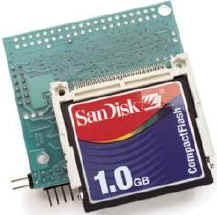
The terrain that is utilized by the NATC, totaling approximately one million acres, is representative of conditions found worldwide, making it an ideal place to test all types of vehicle systems, from passenger cars, to Class 8 trucks, to earth moving and agricultural equipment. Vehicle manufacturers, users, developers, and government agencies from around the world take their cars and trucks to NATC to undergo sophisticated testing.
At NATC, vehicles are tested in almost every way that a vehicle can be tested. The facility boasts three full sized environmental test chambers and two component-sized chambers. In the main chambers, weather conditions such as salt fog, blowing dust, blowing sand, humidity, freezing ice or rain, solar radiation, high and low temperatures can be reproduced to test a vehicle’s resistance to environmental conditions. In addition to this, there are sites that conduct tire testing, durability testing, and corrosion and fungus testing on the grounds of NATC.
Skid pads, a large tilt table, established slopes, fording pits, and various obstacles all contribute to the massive system of testing facilities that make up the NATC.
With all the lengthy and expensive testing completed at NATC, in the end, it is the data collection of the vehicles’ responses to this testing that makes it all worthwhile. Facilitating this process, is our Flashcore-B (FB) controller (pictured at left), a crucial component used in 54 of the data collection systems employed by the NATC.
Our Flashcore-B was the first choice of NATC engineers, according to Rick Capps, because of three reasons: “the price, the small dimensions, and the functionality.” Measuring only 2.1 x 2.35 inches and based on a high performance 40 MHz 188 CPU with 2 UARTs, timers, I/Os, 512KB Flash, 16-bit ADC, DAC and a 50-pin CompactFlash receptacle, the FB is ideal for precision data acquisition and for applications requiring mass data exchange.
The Flashcore-B allows access to mass storage CompactFlash cards (up to 2 GB). Users can easily add mass data storage to their embedded application via RS232, TTL I2C, or parallel interface. In addition to this, an ultra low power, 20 MHz, option is available, which yields significant improvement in operating life for battery-power.
 In order to determine how a vehicle is performing during testing, the FlashCore-B records a full set of vehicle parameters in real-time. Sensors in the engine, transmission, and ABS brake system communicate via a CANbus protocol, which is then converted to RS232 for the FlashCore-B. A separate GPS module sends current position and speed updates via a separate RS232 port to the FlashCore-B. The FB uses its own onboard analog inputs to acquire additional analog data, like the environmental temperature. All of this data is combined to provide information about a particular vehicle’s durability and performance during a number of various tests. The FB logs the data by recording it onto the Compactflash cards as files in the FAT12/16 filesystem. Ultimately, the card is transferred over into a PC-based CompactFlash drive, where NATC personnel can access the data in the form of an automated performance report. Through the years, the NATC has been responsible for contributing to the development of wheeled and tracked vehicles alike. Their facilities have supported extensive testing that has even served as a platform for validation of new intelligent transportation system concepts. More than 1,000 different vehicle systems have been assessed and over 40 million test vehicle miles logged, making NATC the leading edge of transportation technology.
In order to determine how a vehicle is performing during testing, the FlashCore-B records a full set of vehicle parameters in real-time. Sensors in the engine, transmission, and ABS brake system communicate via a CANbus protocol, which is then converted to RS232 for the FlashCore-B. A separate GPS module sends current position and speed updates via a separate RS232 port to the FlashCore-B. The FB uses its own onboard analog inputs to acquire additional analog data, like the environmental temperature. All of this data is combined to provide information about a particular vehicle’s durability and performance during a number of various tests. The FB logs the data by recording it onto the Compactflash cards as files in the FAT12/16 filesystem. Ultimately, the card is transferred over into a PC-based CompactFlash drive, where NATC personnel can access the data in the form of an automated performance report. Through the years, the NATC has been responsible for contributing to the development of wheeled and tracked vehicles alike. Their facilities have supported extensive testing that has even served as a platform for validation of new intelligent transportation system concepts. More than 1,000 different vehicle systems have been assessed and over 40 million test vehicle miles logged, making NATC the leading edge of transportation technology.
Everyday, they continue to uncover new ways of improving vehicle performance and safety. This is all made possible with the help of our Flashcore-B, which allows the NATC to continue testing vehicles in an efficient and productive manner while being confident that their data collection is in reliable hands.


